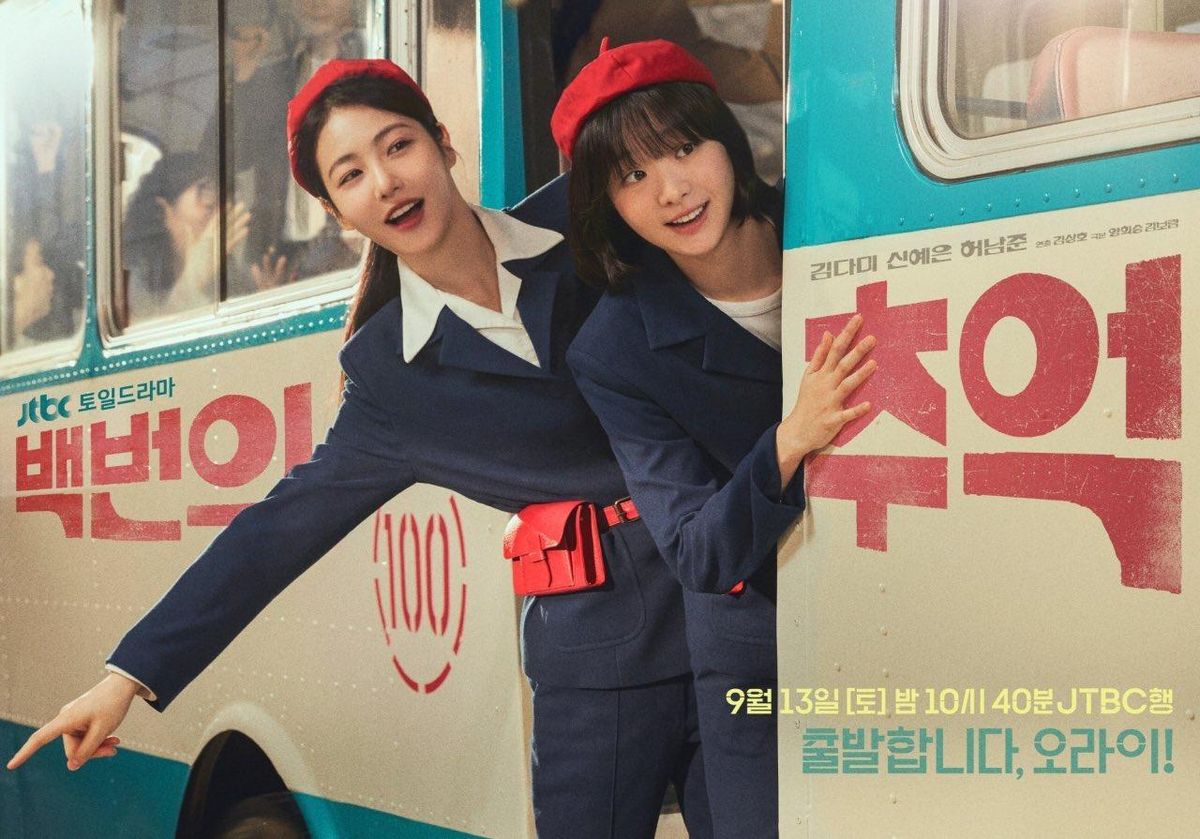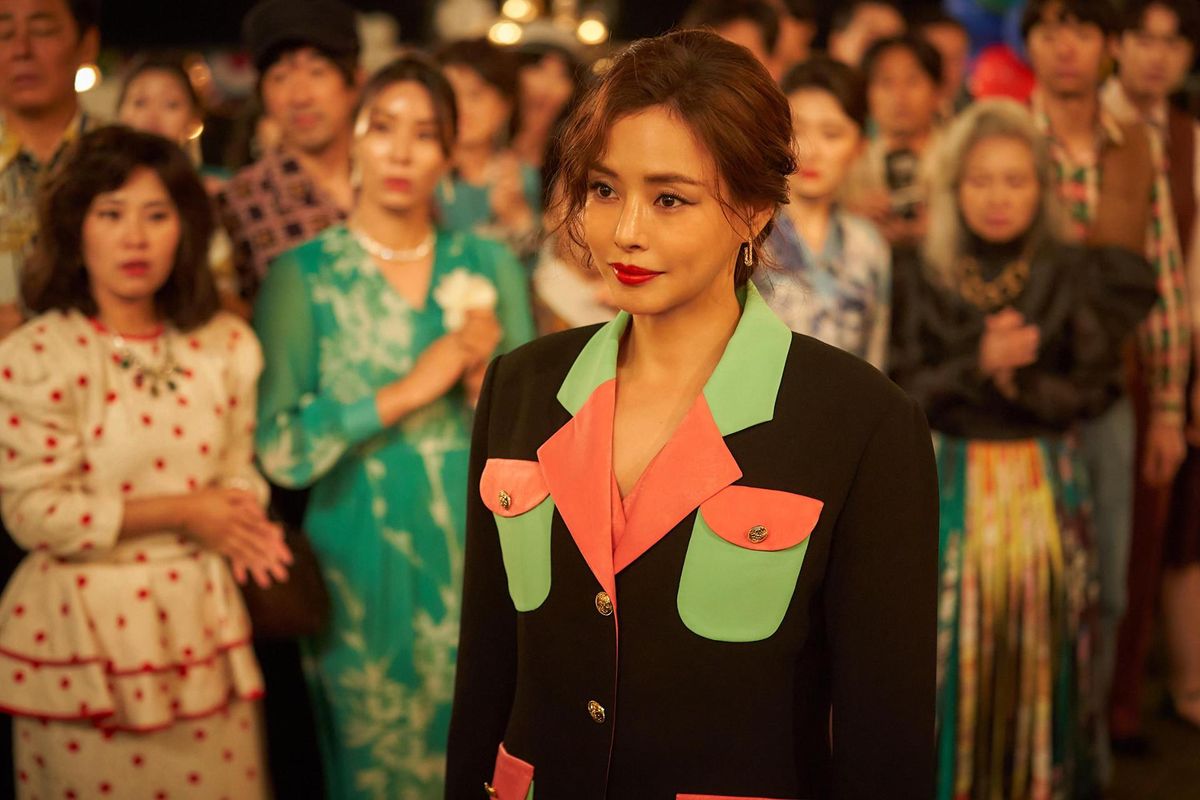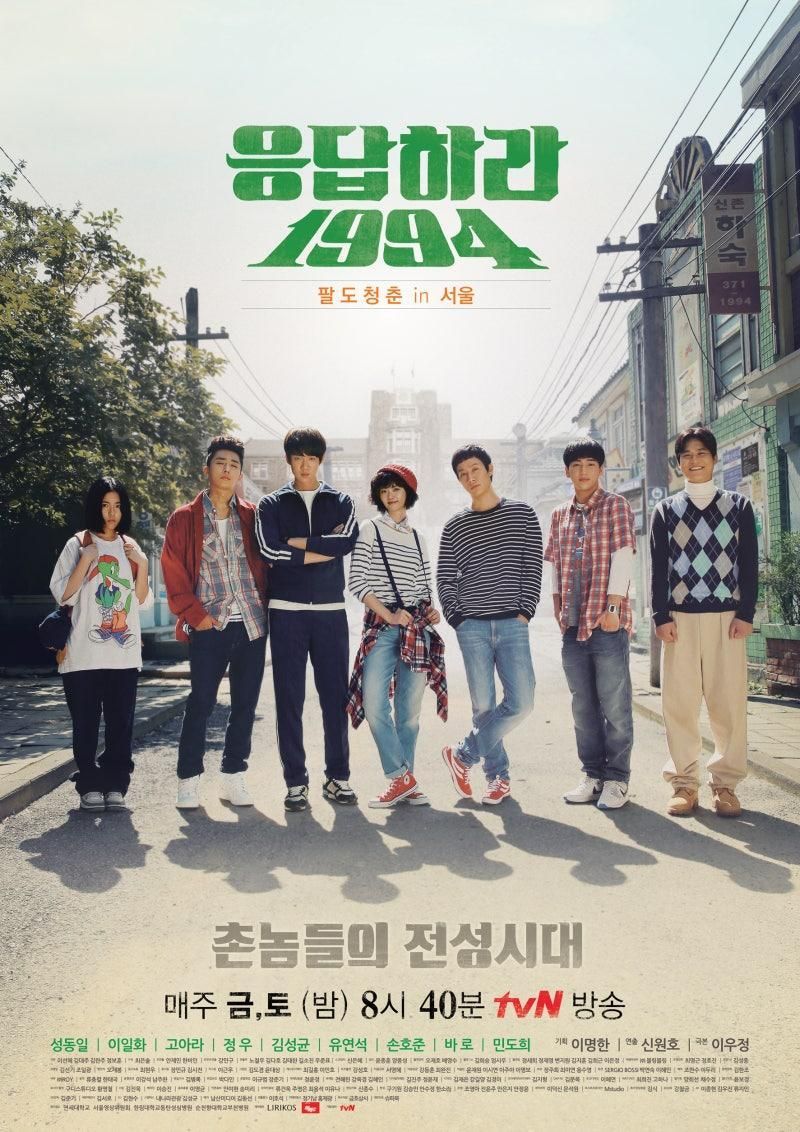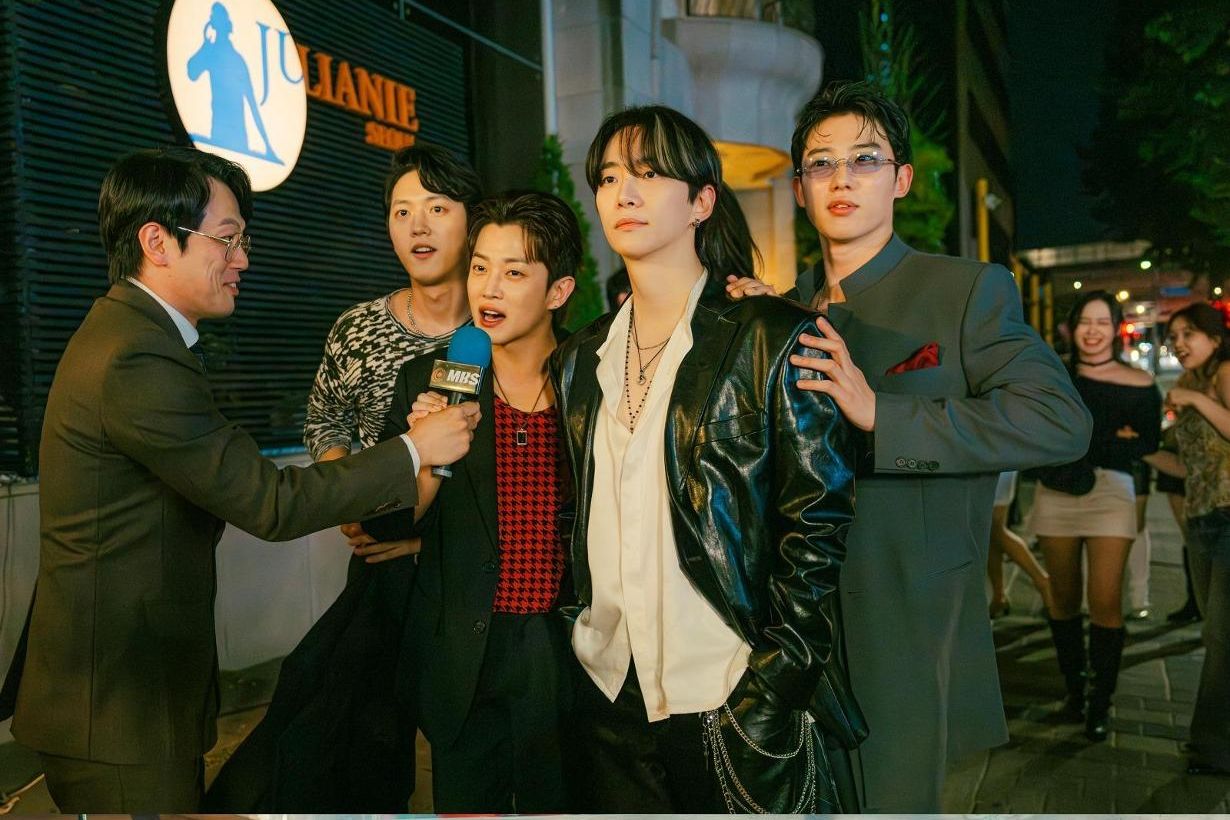Retro fever is sweeping Korea’s television screens, bringing back the sights and sounds of an era defined by pagers, cassette tapes and neon-lit dance battles.
The new tvN series “Typhoon Family,” debuted Saturday, has been getting extra attention for its meticulous recreation of the 1990s zeitgeist.
The drama’s opening sequence draws viewers straight into the heart of 1990s Seoul. On one side of the city, the camera pans across the busy offices of Typhoon Trading, a medium-sized firm nestled in Euljiro, where employees hustle through another long workday.
On the other, just across the river in Apgujeong, outside a buzzing nightclub, a group of flashy young trendsetters — known as the “Orange Tribe,” affluent 20-somethings from Seoul’s upscale Gangnam District — pose for TV interviews, exuding the glamour and excess that defined their time. Enhancing the time-capsule effect, the sequence even re-creates the broadcast captions used on 1990s Korean television.
As the story unfolds, characters interact with the era’s everyday essentials — pagers, outgoing-call-only “city phones,” cassette tapes and abacuses — unlocking a flood of nostalgia for anyone who remembers those days. Their appearances on the beloved dating show “Love Studio” only deepen the authenticity, painting a vivid portrait of what life and love felt like in 1990s Seoul.

A scene from the tvN Drama “Typhoon Family” / Courtesy of CJ ENM
Set against the dramatic backdrop of the 1997 Asian financial crisis, the drama follows Typhoon Trading, a bustling trading company thrown into turmoil by the sudden death of its president, Kang Jin-young (Sung Dong-il). As bankruptcy looms, his son Tae-poong (Lee Jun-ho) steps in as an inexperienced successor, marking the start of his coming-of-age journey.
Sporting earrings, streaks of color in his hair and a flair for nightclub dance battles, Tae-poong brings the bold, style-obsessed spirit of Korea’s Generation X to life in intricate detail, capturing the era as if it were yesterday.
In the latest episode, Tae-poong’s missed opportunity for a proper farewell with his father becomes a poignant moment of reckoning and personal growth.
The production team paid close attention to historical details.
“We believed that an honest, detailed portrayal of 1997 forms the drama’s very identity,” director Lee Na-jeong said at a recent press conference.
To achieve this, the production team sourced rare props, including museum-grade telex machines, and interviewed countless salarymen who worked through the period — ensuring every scene rings true to those who remember and introduces a distinct way of life to new audiences.
“Typhoon Family,” through the lens of the financial crisis, is posed to explore uncertainty, solidarity and the shared emotional landscape of that period — evoking empathy from viewers. Ratings rose from 5.9 percent to 6.8 percent in its second episode, showing that audiences are hooked on both nostalgia and compelling drama.
“Typhoon Family” is available globally on Netflix.

A scene from the JTBC drama “A Hundred Memories” / Courtesy of JTBC
‘A Hundred Memories’
Premiered on Sept. 13, JTBC’s weekend drama “A Hundred Memories” invites viewers into the nostalgic glow of 1980s Korea, weaving together themes of friendship and first love around the iconic 100 bus.
The story follows two spirited young women, Young-rye (Kim Da-mi) and Jong-hee (Shin Ye-eun), both bus conductors whose friendship and resilience are tested by their encounters with Jae-pil (Heo Nam-jun), a privileged yet troubled youth.
More than a nostalgic romance, the drama spotlights a unique cultural role from the era: bus conductors who collected fares, shepherded passengers and signaled departures with the memorable cry “Alright,” meaning “ready to go.”
The production team painstakingly sourced and restored vintage buses that once operated in Seoul, creating a vivid sense of time and place. They also bring to life evocative details from that era’s youth culture — the cheering notes night school students would pass to daytime classmates, popular radio requests at music cafes and the excitement of group dating after school in school uniforms. All these signify the vibrant energy of 1980s Korea.
Director Kim Sang-ho emphasizes the series goes beyond period aesthetics: its heart lies in authentically conveying the lived emotions of the era. Through carefully recreated sets, vintage vehicles, authentic uniforms and the genuine camaraderie of its cast, the show conjures both longing and warmth.
“A Hundred Memories” is available on global streaming platforms such as Viki for Western viewers, Viu in Indonesia and U-NEXT in Japan.

Lee Ha-nee is seen in the Netflix series “Aema.” Courtesy of Netflix
‘Aema’
Netflix series “Aema,” released in August, is also a drama set in the 1980s in Chungmuro, the center of Korean cinema.
The drama, depicting the behind-the-scenes story of making the sensational hit erotic film “Madame Aema,” follows top star Hee-ran (Lee Ha-nee) and newcomer Ju-ae (Bang Hyo-rin) as they confront industry corruption, pressures and rivalry, eventually forming a solidarity amid the chaotic film industry.
The production team devoted significant effort to accuracy to authentically revive both the energy of film sets and the cultural heartbeat of an era caught between tradition and rapid modernization.
Especially notable is the meticulous recreation of 1980s Chungmuro’s golden age through fashion, hairstyling and set design. The drama brings to life the era’s bold silhouettes and flamboyant hairstyles. Hair is styled into big, voluminous perms, while the costuming features oversized blazers with assertive shoulder pads, high-waisted trousers and vibrant color palettes.

A promotional poster for the tvN drama “Replay 1994” (2013) / Courtesy of CJ ENM
‘Reply’ series
No discussion of retro K-dramas is complete without the “Reply” trilogy — “Reply 1997,” “Reply 1994” and “Reply 1988” — which reshaped Korean television by blending nostalgic coming-of-age stories with vibrant snapshots of 1980s and ’90s society, offering both heartfelt reflection and sharp social commentary.
“Reply 1997” (2012), set in southeastern port city Busan during the late ’90s, explores the rise of K-pop idols, the birth of fandom culture and the transition from analog to digital life, spotlighting the impact of pop culture on a generation forging new identities.
“Reply 1994” (2013), taking place in Seoul in the mid-’90s, follows university students from different regions, capturing their struggles to adapt to urban life, while “Reply 1988” (2015) is set in a working-class Seoul neighborhood during 1988 — a year marked by the Seoul Olympics, student protests and rapid modernization.
The series is much more than just a nostalgic trip. It functions as a cultural archive, using era-specific music, fashion, language and social customs to engage with Korea’s past. By focusing on ordinary people, it reveals how historical events — the Seoul Olympics, political demonstrations, shifts in the workforce and the beginnings of K-pop culture — shaped families and neighborhoods.
Resonating across generations
Culture critic Kim Hern-sik explains the retro boom as a reflection of generational longing.
“The late 1980s and ’90s were foundational in shaping every archetype of contemporary pop culture for the present-day MZ generation (Millennials and Gen Z),” Kim said.
He further points out that Gen Zers, who were born between the late 1990s and the early 2010s, have a tendency to view the analog sensibilities and community warmth they never experienced themselves as refreshing and meaningful, giving new significance to these qualities.
This sentiment is echoed by 36-year-old viewer Kim Ji-young, who admits she is unfamiliar with the day-to-day life of youth in the 1980s, yet she’s an avid fan of dramas set in that era. For her, the appeal of the period transcends generations, offering something that continues to move and inspire today’s audiences.
“Seeing younger celebrities like Jennie and her peers wear wired earphones and enjoy retro styles is curious and new. Surely wanting to be noticed by doing something different plays a role, but I think there’s more to it than that,” she said.
“Today’s generation was born into smartphones. In this age of rapid speed and relentless information, expecting innocence is almost impossible. The 1980s and ’90s have become symbols of purity. So when watching dramas that capture that era, a warmth and longing is awakened — a nostalgic yearning for a gentler, more innocent time.”

